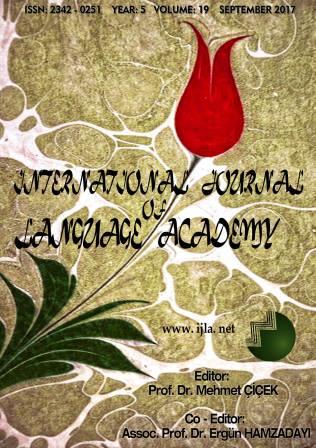Author :
Abstract
This article argues for a drama-smart approach to learning in the teaching of English as a Foreign Language and proposes a pedagogical model, “Drama Smart Learning” (DSL) based on a blended use of creative drama and role play, creating a continuum of drama activities from simple to complex. The first half of the article makes a case for drama-based pedagogy as a structured and systematic approach to learning by way of introduction, followed by what DSL means and its benefits. Next is a discussion of the four common types of drama work in order to further clarify the scope of the approach in terms of its key components. The second half of the article is a practical section, presenting an original task entitled The Duck Family. This practical section includes the description of various activities that can be designed around the topic of the Duck Family providing detailed classroom procedures for teachers to be able to use them in their classes both with young and adult learners. Additional comments are offered along with some teaching tips for developing more drama activities. The final part summarizes the argument of the article and offers educational implications and concluding remarks.
Keywords
Abstract
This article argues for a drama-smart approach to learning in the teaching of English as a Foreign Language and proposes a pedagogical model, “Drama Smart Learning” (DSL) based on a blended use of creative drama and role play, creating a continuum of drama activities from simple to complex. The first half of the article makes a case for drama-based pedagogy as a structured and systematic approach to learning by way of introduction, followed by what DSL means and its benefits. Next is a discussion of the four common types of drama work in order to further clarify the scope of the approach in terms of its key components. The second half of the article is a practical section, presenting an original task entitled The Duck Family. This practical section includes the description of various activities that can be designed around the topic of the Duck Family providing detailed classroom procedures for teachers to be able to use them in their classes both with young and adult learners. Additional comments are offered along with some teaching tips for developing more drama activities. The final part summarizes the argument of the article and offers educational implications and concluding remarks.





